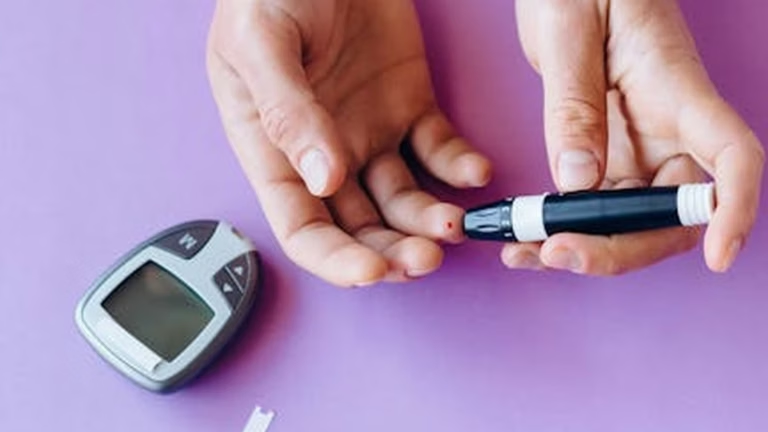Understanding and Managing Type 2 Diabetes: A Comprehensive Guide
What is Type 2 Diabetes?
Type 2 diabetes is a chronic condition that affects the way your body metabolizes sugar (glucose), your body’s main source of energy. With type 2 diabetes, your body either resists the effects of insulin — a hormone that regulates the movement of sugar into your cells — or doesn’t produce enough insulin to maintain a normal glucose level. This leads to high blood sugar levels, which can cause serious health problems over time.
Unlike type 1 diabetes, where the body doesn’t produce insulin at all, in type 2 diabetes, the pancreas usually produces some insulin, but it’s not enough, or the body doesn’t use it efficiently. This is often referred to as insulin resistance.
Symptoms of Type 2 Diabetes
The symptoms of type 2 diabetes can develop slowly, and many people don’t realize they have it until the condition is advanced. Some common symptoms include:
- Increased thirst
- Frequent urination
- Increased hunger
- Unexplained weight loss
- Fatigue
- Blurred vision
- Slow-healing sores
- Frequent infections
- Areas of darkened skin, usually in the armpits and neck (acanthosis nigricans)
It’s important to see a doctor if you experience any of these symptoms, especially if you have risk factors for type 2 diabetes.
Risk Factors for Type 2 Diabetes
Several factors can increase your risk of developing type 2 diabetes. Some of the most common risk factors include:
- Weight: Being overweight or obese significantly increases your risk.
- Inactivity: The less active you are, the greater your risk.
- Family history: Having a parent, sibling, or child with type 2 diabetes increases your risk.
- Age: Your risk increases as you get older, especially after age 45.
- Race/ethnicity: Certain racial and ethnic groups, such as African Americans, Hispanic Americans, Native Americans, Asian Americans, and Pacific Islanders, are more likely to develop type 2 diabetes.
- Prediabetes: Having prediabetes, a condition in which your blood sugar levels are higher than normal but not high enough to be diagnosed as type 2 diabetes, puts you at a high risk.
- Gestational diabetes: Having gestational diabetes while pregnant increases your risk of developing type 2 diabetes later in life.
- Polycystic ovary syndrome (PCOS): Women with PCOS have an increased risk.
Diagnosing Type 2 Diabetes
Type 2 diabetes is typically diagnosed through blood tests. Common tests include:
- Fasting plasma glucose (FPG) test: Measures your blood sugar after an overnight fast.
- A1C test: Measures your average blood sugar level over the past two to three months.
- Oral glucose tolerance test (OGTT): Measures your blood sugar levels after you drink a sugary liquid.
Your doctor will interpret the results of these tests to determine if you have type 2 diabetes or prediabetes.
Managing Type 2 Diabetes
Managing type 2 diabetes involves a combination of lifestyle changes, medication, and regular monitoring. The goal is to keep your blood sugar levels within a healthy range and prevent complications.
Diet and Nutrition
A healthy diet is crucial for managing type 2 diabetes. Focus on:
- Eating plenty of non-starchy vegetables, such as broccoli, spinach, and carrots.
- Choosing whole grains over refined grains.
- Including lean protein sources, such as chicken, fish, and beans.
- Limiting sugary drinks, processed foods, and saturated and trans fats.
- Portion control.
Example: Swap white bread for whole-wheat bread, and sugary soda for water or unsweetened tea.
Exercise and Physical Activity
Regular physical activity helps your body use insulin more effectively and can lower your blood sugar levels. Aim for at least 150 minutes of moderate-intensity exercise per week. This could include brisk walking, cycling, swimming, or dancing.
Tip: Start slowly and gradually increase the intensity and duration of your workouts.
Medications
Many people with type 2 diabetes need medication to help manage their blood sugar levels. Common medications include:
- Metformin
- Sulfonylureas
- DPP-4 inhibitors
- SGLT2 inhibitors
- Insulin
Your doctor will determine the best medication or combination of medications for you based on your individual needs.
Monitoring Blood Sugar
Regularly monitoring your blood sugar levels is essential for managing type 2 diabetes. Your doctor will advise you on how often to check your blood sugar and what your target range should be.
Preventing Type 2 Diabetes
Even if you have risk factors for type 2 diabetes, you can take steps to prevent it. These include:
- Maintaining a healthy weight
- Eating a healthy diet
- Getting regular physical activity
- Managing stress
- Getting regular checkups with your doctor
Example: If you’re overweight, losing just a small amount of weight (5-7%) can significantly reduce your risk of developing type 2 diabetes.
Living Well with Type 2 Diabetes
Living with type 2 diabetes requires commitment and ongoing effort, but it’s entirely possible to live a full and healthy life. By following your doctor’s recommendations, making healthy lifestyle choices, and staying proactive about your health, you can effectively manage your condition and prevent complications. Remember to seek support from family, friends, and healthcare professionals. You are not alone in this journey.






